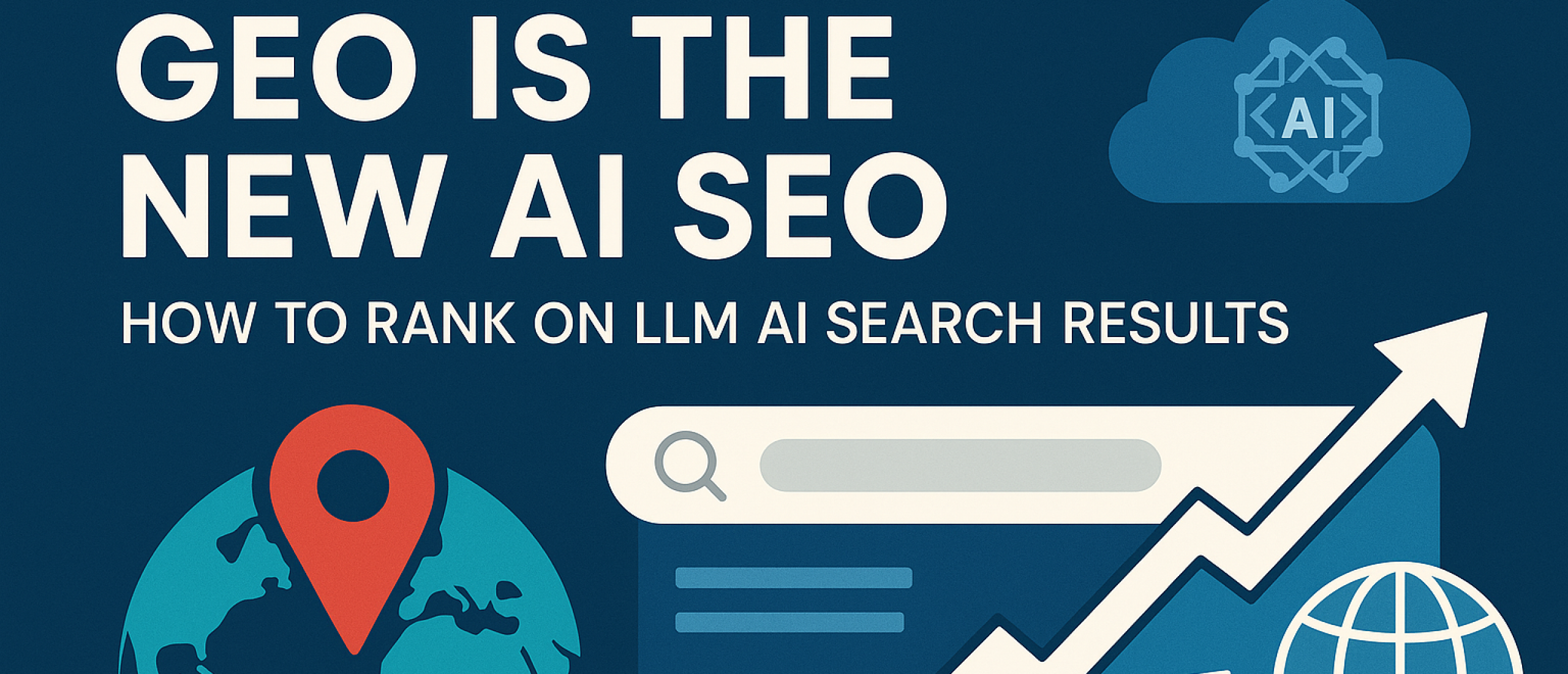
Overview of GEO and AI SEO Evolution
Generative Engine Optimization (GEO) represents a transformative shift in how digital marketing and SEO strategies are approached in the age of artificial intelligence. Traditionally, SEO centered around optimizing content for search engines like Google and Bing to rank higher in organic search results. However, with the rapid evolution of AI-driven search engines and large language models (LLMs) such as ChatGPT, Perplexity, and Google's AI Mode, the landscape has changed dramatically.
Unlike conventional search engines that primarily provide a list of links to users, these AI-powered platforms generate concise, aggregated answers directly from multiple sources of information. This shift means users often receive immediate, summarized responses without needing to click through to individual websites, leading to the rise of zero-click searches. Research shows that over 58% of Google searches now end without a click, with AI overviews appearing in nearly half of all queries. This trend underscores the necessity for marketers to adapt their SEO practices.
GEO is not just a buzzword but an evolution of SEO focusing on optimizing content so it is cited or referenced within AI-generated answers. Instead of merely targeting keywords for rankings, GEO emphasizes creating authoritative, well-structured content that AI engines can understand and trust. It also involves extending visibility beyond traditional platforms to ensure content is syndicated across social media, blogs, and other channels that AI models crawl for data.
“GEO isn’t just a technical upgrade — it’s a fundamental shift in how information is delivered and consumed online.” — Industry Expert
In essence, GEO positions brands and websites as reliable sources within the AI search ecosystem, enhancing their chances of being mentioned or linked in AI-generated responses. This evolution requires marketers to blend classic SEO tactics with new strategies focused on AI's unique behaviors, such as conversational search and multi-source aggregation.
Understanding Generative Engine Optimization (GEO)
Generative Engine Optimization (GEO) is the practice of optimizing digital content specifically for AI-powered search engines and large language models (LLMs). Unlike traditional SEO, which targets ranking on search engine results pages (SERPs), GEO aims to ensure your content is recognized, cited, and aggregated by AI systems that synthesize information into concise answers.
AI search engines such as ChatGPT, Perplexity, and Grock operate by scanning vast amounts of data from websites, social media, videos, and other digital sources. They aggregate and summarize relevant information in response to user queries, which means content must be structured in a way that these models can easily parse and reference it as a credible source.
Key aspects of GEO include:
- Content richness and depth: Detailed, well-researched content that addresses user questions comprehensively increases the likelihood of being cited.
- Structured data and clarity: Using clear headings, bullet points, and schema markup helps AI understand context and relevance.
- Syndication and multi-channel presence: Publishing content across various platforms like blogs, social media, and video channels amplifies coverage and citation potential.
- Authoritative backlinks and mentions: External validation through backlinks and brand mentions strengthens content authority in AI algorithms.
Because AI engines prioritize aggregated, trustworthy information, GEO also involves strategic collaboration with editorial sources and media outlets to build credibility. Unlike traditional SEO, where rankings are primarily influenced by keyword targeting and backlinks, GEO success depends on being recognized as a reliable knowledge source across multiple channels.
“From how keywords are targeted to how content is created and ranked, AI is changing the game’s rules.” — Mike Barkemeyer, Digital Marketing Director at Lumenalta
In summary, GEO integrates classical SEO fundamentals with innovative approaches tailored to the unique mechanics of AI-driven search engines, enabling brands to secure visibility in the emerging AI search ecosystem.
Strategies to Rank on LLM AI Search Results
Ranking well on LLM-based AI search results requires a strategic blend of content creation, technical optimization, and distribution designed to meet the unique demands of generative AI platforms. Since these engines aggregate data from multiple sources to provide direct answers, appearing in their results means ensuring your content is both accessible and authoritative.
Effective strategies include:
- Produce comprehensive, high-quality content: Create in-depth articles, guides, and feature pages that answer user queries thoroughly. For example, detailed product comparisons or feature breakdowns are highly valuable.
- Optimize for natural language and conversational queries: Since LLMs understand and generate content in a conversational style, tailoring your content to mimic natural human language improves relevance.
- Implement structured data markup: Use schema types like FAQ, Product, and Organization to help AI engines understand your content’s context and improve citation chances.
- Syndicate content across multiple platforms: Share blog posts, videos, and social media posts to increase the footprint where AI engines gather data.
- Build authoritative backlinks: Secure links and mentions from credible industry sources and editorial sites to boost your content’s trustworthiness.
- Regularly audit AI visibility: Test how your brand appears in AI tools like ChatGPT, Perplexity, and Google AI Overviews to identify opportunities for optimization.
Another important approach is refining content based on user prompts and conversational feedback within AI systems. Since LLMs provide answers based on iterative queries, having content that addresses multiple angles and use cases increases the likelihood of being surfaced dynamically in AI responses.
“Strategies need to adapt to the growing influence of AI-generated search overviews.” — BJ Cook, 85SIXTY
In summary, ranking on LLM AI search results requires a forward-thinking SEO strategy that embraces the conversational, aggregated, and multi-source nature of these platforms, combining quality content with broad digital presence and authoritative validation.
Importance of Content Syndication for AI Visibility
Content syndication plays a critical role in enhancing visibility within AI-driven search engines and large language models. Since these AI systems source information from a wide range of platforms — including websites, blogs, social media, and video channels — syndicating your content across diverse digital outlets significantly increases the chances of being discovered and cited.
Syndication involves repurposing and distributing your core content into multiple formats and platforms. For example, a detailed blog post can be transformed into:
- LinkedIn posts targeting professional audiences
- Twitter threads or tweets to engage in real-time conversations
- YouTube videos to capture visual learners
- Facebook posts to reach community groups and followers
This multi-channel approach ensures that AI engines like Grock (Twitter’s LLM) and GPT-based models, which crawl social media and other content sources, have multiple points of reference for your brand and information.
Benefits of content syndication include:
- Increased brand mentions and citations: More mentions across platforms lead to higher trust signals in AI algorithms.
- Greater backlink opportunities: Syndicated content encourages shares and links from other sites.
- Improved multi-format engagement: Catering to different audience preferences strengthens overall reach.
- Enhanced topical authority: Consistent messages across channels reinforce your expertise in a niche.
Tools that automate syndication, such as AI-powered content distribution platforms, enable seamless sharing while maintaining consistency and quality. This approach is essential because AI models aggregate information that is broadly available and well-circulated online.
“Syndication is key to increasing the likelihood you show up on these LLMs.” — Industry Practitioner
To maximize AI visibility, ensure that every piece of content is adapted thoughtfully for each platform, maintaining relevance and engagement. Syndication is not just repetition; it is strategic dissemination to capture AI and human attention alike.
Leveraging Backlinks and Authority in GEO
Backlinks and domain authority remain foundational pillars in Generative Engine Optimization (GEO). While AI search engines aggregate and summarize information, they rely heavily on signals that indicate trustworthiness and credibility. Backlinks from authoritative sources serve as strong endorsements, helping AI systems determine which content to cite.
In GEO, the emphasis on backlinks extends beyond quantity to focus on quality and relevance. AI algorithms weigh editorial mentions, citations from respected industry websites, and references from recognized media sources more heavily than self-published or less credible links.
Key tactics to leverage backlinks and authority include:
- Building relationships with authoritative sites: Engage in guest posting, collaborations, and expert roundups to earn high-quality backlinks.
- Generating press releases and media coverage: Distributing newsworthy content to reputable news outlets creates multiple brand mentions and citations, enhancing AI trust signals.
- Encouraging brand mentions on social media and forums: Active participation in niche communities increases organic references.
- Monitoring backlink profiles: Use SEO tools to track and disavow low-quality links that may harm authority.
This focus on external validation aligns with research showing that over 60% of AI's understanding of brand reputation is influenced by editorial sources rather than self-published content. Therefore, a robust backlink strategy is critical not only for traditional rankings but also for GEO success.
“The more mentions and backlinks your brand has across authoritative sources, the better your chances of being cited in AI-generated answers.” — SEO Expert
In conclusion, link building and authority amplification should be integrated tightly with content creation and syndication efforts to establish a strong, trusted presence within the AI search ecosystem.
Optimizing for Conversational and Voice Search
As AI search engines evolve, conversational and voice search optimization has become essential to effective Generative Engine Optimization (GEO). With over 70% of users preferring voice search for their queries, optimizing content to match natural language patterns and conversational contexts significantly improves discoverability on AI platforms.
Conversational search involves queries phrased as natural, spoken language rather than traditional keyword strings. For example, instead of typing “best SEO tools,” a user might say, “What are the best SEO tools for small businesses?” AI models excel at understanding and responding to such queries, making it critical to align content accordingly.
Optimization strategies include:
- Using natural language and question-based content: Incorporate FAQs, conversational phrases, and long-tail keywords that mirror how people speak.
- Structuring content for quick answers: Provide succinct, clear responses to common questions within your content, ideally using bullet points or short paragraphs.
- Implementing voice-friendly schema markup: Use structured data to highlight FAQs, how-tos, and product details to assist AI in extracting relevant information.
- Enhancing mobile and voice device usability: Ensure fast loading times, easy navigation, and accessibility, as voice searches often occur on mobile devices.
This approach not only improves visibility in AI-driven chatbots and LLMs but also enhances user experience for voice assistants like Siri, Alexa, and Google Assistant.
“Optimizing for natural language is no longer optional; it’s a necessity to capture voice search traffic and conversational AI visibility.” — Digital Marketing Specialist
By aligning content with the nuances of conversational speech and voice search behavior, businesses can position themselves effectively in the emerging AI-powered search landscape, driving both brand awareness and engagement.
Conclusion on Ranking in LLM AI Search Engines
The rise of Large Language Model (LLM) AI search engines marks a new chapter in digital marketing and SEO. Generative Engine Optimization (GEO) is the forward-looking strategy that businesses must adopt to ensure visibility and relevance in this evolving environment. Unlike traditional SEO, GEO focuses on being cited as a trusted source in AI-generated answers rather than merely ranking for keywords.
Success in GEO hinges on a holistic approach that combines:
- Producing detailed, authoritative, and structured content tailored for AI comprehension
- Syndicating content across multiple channels to maximize reach and citation opportunities
- Building strong backlinks and external validation from reputable sources
- Optimizing for conversational and voice-based queries to align with user behavior
While AI is reshaping how users seek and consume information, the fundamentals of trust, authority, and quality remain paramount. GEO is not a replacement for traditional SEO but rather an essential evolution that expands the scope of digital visibility to encompass AI-driven platforms.
“In 2025, it’s less about search engine optimization and more about search everywhere optimization.” — Neil Patel, NP Digital
By embracing GEO strategies, businesses can future-proof their digital presence, ensuring they are discoverable not only by humans but also by the intelligent systems that increasingly mediate online information. This balanced approach empowers brands to thrive in the AI-powered search era.









